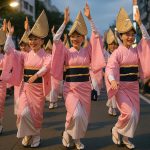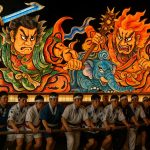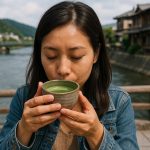Introduction to the Traditional Tea Ceremony
The traditional tea ceremony, often tied closely with Japanese culture, represents a ritualistic and intricate art that underscores values of harmony, respect, purity, and tranquility. This captivating cultural practice, known as chanoyu, extends beyond the mere act of consuming tea. It is an aesthetic journey centered around the preparation and collective sharing of tea from the heart, fostering a connection between participants.
Historical Background
The rich history of the tea ceremony traces its roots back to China, where this practice initially began. By the 9th century, it was elevated to an esteemed art form in Japan, greatly influenced by the principles of Zen Buddhism. It subsequently emerged as a spiritual discipline involving artistic refinement merged with meditation. Historical figures, including prominent tea masters such as Sen no Rikyū, were instrumental in laying the foundational principles for the practices observed in contemporary ceremonies. Their contributions have indelibly shaped the cultural and spiritual nuances of the tea ceremony as we know it today.
Core Principles
Guiding the traditional tea ceremony are four main principles: Wa (harmony), Kei (respect), Sei (purity), and Jaku (tranquility). These principles are intrinsic to creating the reflective and tranquil ambiance central to the ceremony.
Harmony, or Wa, accentuates the seamless integration of the participants and their surroundings. The aim is to foster an environment where all elements coalesce naturally.
Respect, or Kei, embodies the profound appreciation that participants must exhibit toward each other and the utensils used. It stems from the understanding that every aspect of the ceremony deserves honor and gratitude.
Purity, or Sei, represents both the physical act of cleansing the utensils and the metaphorical cleansing of the mind. This principle encourages participants to approach the ceremony with an unclouded and focused mindset.
Tranquility, or Jaku, is the serene completion of the ceremony, reflecting a state of calm and composed spirit that participants strive to achieve.
Tea Ceremony Settings
The setting for the tea ceremony is a pivotal component, often conducted in a designated room known as a chashitsu. This space features traditional Japanese architectural elements designed to enhance the ceremony’s meditative and intimate nature. Within the chashitsu, participants engage in a sequence of ritualistic steps, each infused with symbolic meaning that deepens the overall experience.
The room is typically minimalistic, with modest decorations that contribute to the ambiance of simplicity. Key features often include a tatami mat floor, a small tokonoma (alcove) for displaying art or flowers, and a hearth for heating water. The atmosphere is intentionally curated to direct focus toward the ceremony and foster mindfulness.
Participants and Roles
A traditional tea ceremony involves multiple participants, each fulfilling distinct roles that contribute to the harmonious flow of the event.
The host holds the primary responsibility for organizing and executing the ceremony. Their meticulous preparation and thoughtful presentation of the tea reflect a deep commitment to the values upheld in the ceremony. It is crucial for the host to exhibit mastery over each element of the process to ensure a smooth and meaningful experience.
The guests also play a vital role, actively participating and adhering to etiquettes that demonstrate appreciation and respect. They engage in the ceremony through gestures and actions that reciprocate the sentiments extended by the host. Understanding these roles is integral to appreciating the depth and significance that the tea ceremony conveys.
Utensils and Their Significance
An array of specialized utensils is employed during a tea ceremony, each selected with great care and typically bearing rich historical significance.
Among the essential items is the chawan or tea bowl, a central piece chosen not only for its aesthetic appeal but also for the tactile experience it provides guests. The chasen, a bamboo whisk, is used in mixing tea with precision, while the chashaku or tea scoop measures the perfect amount of tea powder. Lastly, the natsume or tea caddy securely stores the tea, symbolizing preparedness and care.
Each tool carries with it a story, often handcrafted by artisans with a deep understanding of their cultural significance, adding layers of meaning to the ceremony.
Steps in the Tea Ceremony
The tea ceremony unfolds through several meticulously defined steps, each contributing to the overarching sense of mindfulness and tranquility.
Preparation: The ceremony begins with the host cleaning the utensils, a ritual act symbolizing purity and respect. This cleansing is both literal and metaphorical, intended to purify the space and the participants’ minds.
Tea Mixing: The host proceeds to mix the powdered tea with hot water, using precise, deliberate movements. This step embodies the artistry and skill that underscores the ceremony.
Serving: The host then serves the prepared tea, typically beginning with the guest of honor as a mark of respect. This action underscores the significance of carefully nurtured social bonds.
Drinking: Guests follow a specific etiquette while consuming the tea, embracing protocols that dictate how to hold the bowl and express appreciation. This aspect of the ceremony highlights the respect and mindfulness each participant brings to the shared experience.
Conclusion
Participating in a traditional tea ceremony offers an insightful glimpse into Japanese culture and its spiritual practices. While it extends beyond a simple tea-drinking event, it provides an immersive opportunity to explore mindfulness, appreciation, and artistic expression in a harmonious setting. For those interested in experiencing or observing a tea ceremony, cultural centers and tea schools often provide opportunities, and further details can be found through various online portals offering schedules and event information. Engaging with the tea ceremony can be a deeply enriching experience, offering a chance to connect with centuries-old traditions and explore new dimensions of cultural artistry.













